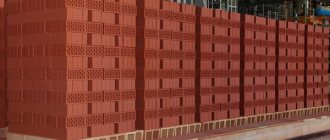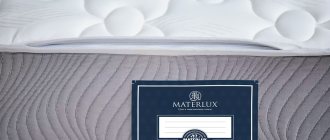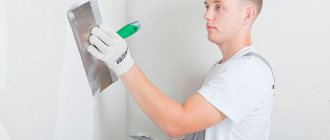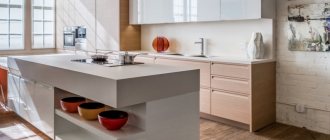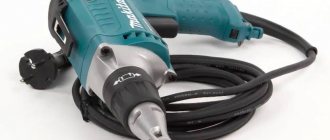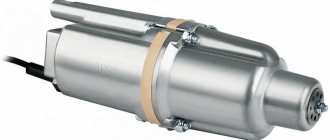Moisture and water are two main factors that have a negative impact on the durability and performance characteristics of concrete structures. Penetrating into walls, foundations, and roofs, they cause the formation of cracks and other defects. The only way to eliminate this destructive effect is to carry out waterproofing work.
Pasting (TechnoNIKOL, Gidroizol, Technoelast, Tefond)
Pasted insulation consists of multilayer elastic membranes, bitumen waterproofing and polymer films. Fastening any material can be done in three ways: fusing with a torch, mechanical fastening, gluing to bitumen mastic . Plus, self-adhesive films have appeared on the market, which have become a godsend in conditions of high fire safety.
Rolled, adhesive coatings contribute to the formation of a sealed, waterproof layer
Protection is carried out on the basis of sheet, roll, polymer, bitumen, bitumen-polymer materials:
- laminated bitumen waterproofing is a very popular option due to its general availability and low price. A prominent representative of materials of this type is Gidroizol. It demonstrates resistance to cracking, destruction, and rotting. The base is fiberglass, fiberglass or polyester, impregnated with a composition of bitumen with plasticizers. There are two options - double-sided bitumen waterproofing (covered on both sides with a low-melting polymer film), single-sided (there is a layer of granite or mineral chips on top);
- lining (roll) bitumen-polymer – here we are talking about a combination of bitumen and modified polymer additives. These can be elastomers, plastic polymers, known as SBS. Additives work to improve technological and operational characteristics. The finished layer retains elasticity even in cold weather and resists temperature loads, biological effects, and ultraviolet radiation. This category includes the fairly high-quality material Technoelast. It is based on polyester, which is very, very practical. This is the optimal solution for foundations, blind areas, roofing, swimming pools, bridges, canals;
- adhesive polymer waterproofing (films and membranes) - we can say that this is a kind of breakthrough, because it is based on innovative technologies. These are materials based on vulcanized rubber, self-adhesive polyethylene films, TPO membranes, EPDM, LDPE, HDPE. If we talk about membranes, their minimum thickness prevents shrinkage during compression. Great strength, durability, elongation at break work great on exterior concrete. The surface of the membranes can be smooth or corrugated.
The protection system is arranged in the form of interconnected sheets. Roll waterproofing is glued onto pre-primed concrete (adhesive mastics and primers are used for this) and fused using special equipment.
Depending on the actual characteristics of the concrete structure and the requirements of the project, several layers and additional protective structures may be implemented. The method is often combined with the use of coating waterproofing . Mastics improve the adhesion of rolls to concrete, acting as an intermediate layer.
Scope of application : waterproofing basements, foundations, infrastructure facilities, wells, roof protection.
Advantages:
- high waterproofing - if the installation technology is followed, the finished layer can withstand strong water pressure and dynamic loads;
- simple installation - materials of this type can be installed in the shortest possible time;
- It is convenient to cover large working surfaces with adhesive waterproofing, incl. vertical;
- the structure is resistant to external influences - in addition to protection from water, we can talk about protection from ultraviolet radiation, high temperatures, and mechanical wear;
- high strength.
Flaws:
- it is necessary to use bitumen, sometimes primers and high temperature compounds;
- Polymer glued waterproofing is available at a high cost and is characterized by low vapor permeability.
Rolled waterproofing can be used to insulate any vertical and horizontal surfaces
Specifications
| Type of waterproofing | Bitumen-polymer | Bituminous | Polymer |
| Roll width/length, m | 1.0/8.0 | 1.0/10.00 | 1.0-2.5/10 |
| Service life, years | Over 30 | 5-10 | Over 50 |
| Operating temperature, degrees | -30 +85 | -30 +80 | -5 +80 |
| Weight, kg/m2 | 5.5 | 4 | — |
| Area per package, m2 | — | 10 | — |
| Base | — | Fiberglass | — |
| Welded side | Polymer film | Protective polymer film | — |
| Upper side | Sand | Coarse powder | — |
Coating (Ceresit, Litocol, Osnovit, Knauf, Webertec, liquid glass)
These are all kinds of bitumen mastics, cement, polymer materials, mastics with sealants. The materials are applied with a spatula, rollers, brushes, or spraying and form a durable waterproofing film or layer . Glass cloth or fiberglass can be placed between the layers.
This is a solution for waterproofing structures against a backdrop of limited financial resources. In fact, the range of materials is quite economical. However, they can work on vertical and horizontal surfaces and provide protection from groundwater, condensation, and precipitation.
This group includes plaster waterproofing mixtures. These are dry compositions on a cement-mineral basis. Decorative plasters are widely used; they are frost-resistant and can withstand aggressive environments. This is the least expensive method of external concrete waterproofing, providing additional protection to the coating layers.
The most effective compositions are made on a bitumen and cement basis . Plus, there must be modifying additives that work to provide unique characteristics. Depending on the tasks, bitumen-polymer and bitumen coating waterproofing can provide anti-corrosion, anti-frost, and antiseptic properties.
Average consumption – 2-3 kg/sq.m. a moisture-resistant thin film of 1-6 mm is formed on the concrete. Scope of application: waterproofing of plinths, foundations, basements, tanks, swimming pools , walls, roofs, balconies, terraces, bridges, tunnels, dams, garages, car washes.
Advantages:
- mastics and paints fill the pores of the base and polymerize, reliably protecting the base. With proper preparation and application technology, the coating can last 50 years without losing its waterproofing properties;
- we can talk about environmental friendliness;
- materials allow you to obtain a durable protective layer;
- ease of application;
- vapor permeability, frost resistance;
- bridging cracks up to 0.9 mm.
Coating waterproofing also provides protection against fungus and mold, the harmful effects of alkalis and acids
Flaws:
- The waterproofing coating is subject to mechanical wear. Protection with plaster or cladding is required.
Technical specifications
| Service life, years | 5 |
| Waterproof | W6 |
| Consumption, 1mm/sq.m | 1.6 kg |
| Operating temperature, degrees | -50 +70 degrees |
Application methods
Anti-filtration insulation is a comprehensive protection of underground and underwater structures, as well as their elements. It protects against 3 types of exposure:
- Flows.
- Water pressure.
- Capillary effect.
Anti-filtration insulation is used for moisture protection of basements, mines, caissons, swimming pools, dams, canals, sluices and other structures. Below are the most common waterproofing methods.
Coating
One of the most common methods of moisture insulation. This technique is used both for external work (to protect a house and structures from capillary moisture) and internal work (for example, when waterproofing basements). Compositions based on bitumen mastics or cement mortars are used.
The product is applied in 2 or more thick layers, and the coating thickness should be from 2 mm to 1 cm.
The advantages of coating bitumen moisture insulation are a high degree of protection against moisture, good elasticity, affordable price and ease of implementation. Among the disadvantages: fragility (at zero temperature the coating becomes brittle, resulting in its destruction - such a coating protects for no more than 6 years), fire hazard of the work (high heating temperature of the bitumen). In this regard, mastics with the addition of rubber and polymers, which improve the properties of materials, have recently become increasingly popular.
Mastics, sealants and bitumens are toxic, so they can only be used on a dry base.
Coating moisture insulation using cement mortars also has excellent moisture-proof properties. A prominent representative is the two-component polymer-modified cement mortar sika top 109. After hardening, the coating remains elastic and flexible. This composition is used for moisture protection of foundations, stone and reinforced concrete structures, internal and external protection of swimming pools and other reservoirs. In addition, it is used as a primer for protective elastic coatings.
Pasting
This type of work involves the use of roll or sheet materials, which are glued in several layers using bitumen mastics or synthetic resins.
The materials consist of several components:
- adhesive base, which simplifies the procedure for attaching the material due to its location on the frame (this layer is not mandatory, but is common);
- the substrate, made of cardboard, polymer materials, etc., is a frame for applying a protective layer;
- The waterproofing layer located on top contributes to moisture protection.
The easiest way to perform such insulation is on horizontal surfaces. This insulation method is applicable to protect concrete and other types of surfaces.
The canvas should be installed with an overlap of 10 cm to avoid overlap of the joints of adjacent elements and subsequent leakage.
Painting
Paint-type waterproofing forms a membrane that prevents porous building materials from absorbing moisture. Most often, these are emulsions based on polymer, polymer-cement, epoxy resins or bitumen mastics. Often components are added to the composition to improve their properties. Waterproofing by painting is done with a brush, roller or spray. This method is used for interior and exterior decoration.
Bitumen mastics are applied in 2-3 layers, each of which must be at least 2 mm. For synthetic compositions, 1-2 layers 1 mm thick are sufficient.
Waterproofing paints can be divided into:
- bitumen (emulsions with the addition of bitumen and auxiliary agents);
- polymeric (containing synthetic resins, rubber-resin mixtures, paint and varnish components);
- bitumen-polymer (based on bitumen and various synthetic polymers);
- polymer-cement (based on polymer-cement compositions, liquid glass, Portland cement and other similar materials);
- tar-epoxy (thixotropic two-component tar-epoxy resins).
The painting method is used both for external protection of building structures (coating cracks in walls, foundations) and for interior decoration. Moisture accumulates under the tiles and in places where pipes pass, causing mold to appear and building materials gradually deteriorating.
Waterproofing the walls and floors of bathrooms in the event of flooding prevents water from leaking to the lower floors.
Waterproofing plaster
This type of moisture protection is intended to prepare surfaces with high levels of humidity for finishing. These include primarily basements, foundations, basements and external walls of houses. Based on their composition, moisture-proof plasters are divided into 2 types:
- Asphalt.
- Cement-sand.
The latter are relatively inexpensive. You can even make them yourself, and the coating procedure itself is similar to conventional plastering.
Cement plastering is applied in several layers (from 5 to 40 mm.)
Asphalt plasters are more often used in industry. They are not so budget-friendly, and special equipment is required to work with them. Asphalt plaster is used in cold and hot (heating up to 180 degrees Celsius) methods.
Asphalt plasters must be laid in 2-3 layers, each of which is from 2 to 4 mm.
Penetrating
This method is considered the most popular and effective. The functionality consists in the penetration of the moisture-protective composition into the structure of the material to a depth of 20 cm. Thus, the waterproofing layer displaces moisture, filling all possible pores and microcracks.
Advantages of the penetrating method of moisture protection:
- giving additional strength to concrete structures;
- simultaneous repair of all existing cracks;
- no need for priming or applying a protective layer;
- increased resistance to low temperatures;
- formation of an airtight and seamless coating.
Penetrating waterproofing is used for moisture protection of foundations of different heights, basements against groundwater, swimming pools and other water containers, bathrooms, bathhouses and underground structures.
The best penetrating mixtures:
- Penetrol.
- Osmosis.
- Hydrotex.
- Hydrohit.
- Akveton.
- Crystalizol.
- Sprayable
Waterproofing of this type is carried out using a spray gun. Acrylic, bitumen and polyurethane compositions are used as spraying agents. Such protection resists not only moisture, but also the effects of more aggressive substances.
After application, the moisture-proof mixture hardens, forming a durable protective layer with pronounced anti-slip properties. This waterproofing is durable - protection lasts up to 50 years.
This method is used to protect basements, swimming pools, foundations and roofing work.
Injectable
It is used in construction when it is necessary to introduce insulating composition into cracks, seams and pores, as well as during repairs. As a rule, the injection method is used along with other types of waterproofing to further strengthen hard-to-reach areas.
Resins based on:
- polyurethanes;
- silicates;
- acrylates
Cement and special emulsions are also used.
Backfill
Aimed at protecting structural parts of a building from water penetration using bulk mixtures. When interacting with water, a dense, moisture-proof protective layer is formed.
This type of insulation is used to fill any cavities in the foundation, floors and walls. The advantages are high thermal insulation characteristics and durability.
The disadvantages include:
- high cost;
- subsidence over time;
- complexity of installation.
The bulk mixtures contain bentonite, mineral wool, ash and perlite sand.
Blocking waterproofing (Ceresit, IVSIL, Litocol, Osnovit, Penetron)
No matter how well the waterproofing work is carried out, there may come a time when the most technologically advanced layer begins to wear out. So, concrete will leak, which will be eliminated by blocking waterproofing. This is a rather interesting group of materials, designed for quick and high-quality removal of leaks and water suction through cracks and cracks.
They use special dry mixtures made on the basis of high-quality cement and silicates. The material is also used to protect monolithic foundations . Polymers contribute to the formation of a durable layer that can absorb large volumes of moisture. In general, these are quick-hardening mixtures that require mixing with water.
Scope of application: stopping leaks in enclosing structures, filling defects in concrete caused by leaks, sealing cracks and holes. .
Advantages:
- steam and waterproofing of target areas;
- excellent strength and ability to work even under high pressure;
- phenomenal resistance to aggressive salt environments;
- record durability;
- no shrinkage;
- high adhesion;
- resistance to mechanical stress.
Flaws:
- work can be carried out at temperatures above +5 degrees;
- high price;
- a professional approach is required.
The average consumption of blocking waterproofing is approximately 1.9 kg/sq.m. per 1 mm layer
Specifications
| Type | Repair composition |
| Type of waterproofing | Hydroseal |
| Service life, years | 5 |
| Waterproof | W8 |
The main advantages of floor waterproofing
Waterproofing is the protection of the concrete base, screed and front floor covering. Experts advise carrying out waterproofing immediately before screeding, since concrete can absorb moisture through micropores and subsequently collapse.
This is especially true for owners of first-floor apartments, since the screed is exposed to cold (from the basement) and warm (from the apartment) air currents.
Protecting the floor from moisture is necessarily used in the bathroom, toilet and kitchen, because all the plumbing is located there and there is the highest risk of flooding neighbors
However, the most reasonable option would be to waterproof the floor in the entire apartment, because:
- the solution used for floor screed contains water, so there is a risk of leakage to neighboring apartments located below;
- the heating system may fail, which will also lead to flooding of the lower floors;
- waterproofing will increase the strength and durability of the floor, protect against microcracks;
- When installing a heated floor system, waterproofing is required.
It is worth noting that waterproofing in areas located close to plumbing equipment must be especially carefully arranged.
Penetrating waterproofing for exterior use (Penetron)
When it is necessary to carry out reliable waterproofing work, there may be several options, since roll and pasting materials do not give up their positions. However, there are situations when it is necessary to carry out large-scale work and then penetrating waterproofing comes to the rescue.
These are dry and liquid compounds that are applied to wet concrete and form a durable crystalline protection . The material penetrates deeply into the mass of concrete, changing its structure, increasing water resistance, strength, and frost resistance. At the same time, the vapor permeability of the base is maintained, that is, the concrete can breathe. And this is exactly the option that can be used for emergency assistance.
Scope of application: waterproofing foundations during laying and construction, repairs, prevention of destruction of concrete structures (roofing, walls, overpasses, bridges, wells, treatment plants), eliminating pressure leaks, sealing cracks, joints, seams. Average consumption – 0.8 kg/sq.m. per 1 mm layer.
Advantages:
- the material forms one whole with the base. The cunning combination of Portland cement, fillers and active additives is characterized by special physicochemical properties. Therefore, the waterproofing seems to merge with the concrete, eliminating the possibility of peeling;
- ease of application - the compositions can be applied not only to the outside, but also to the inside of the structure. The material works even on wet substrates;
- reliability - concrete structures acquire durability and resistance under the pressure of aggressive environments and high temperatures. The bases are strengthened, and at the same time corrosion and the development of mold and mildew are prevented;
- restoration - a unique property of the material - the ability to self-heal cracks.
Flaws:
- the material is applied to the concrete base only under favorable conditions, at a temperature of +5 degrees.
Specifications
| Type of waterproofing | Dry mix |
| Service life, years | 50 or more |
| Waterproof | W20 |
| Frost resistance | Yes |
The need for waterproofing
The structure will be strong if its base is protected from water. Liquid insulator compositions have better performance in comparison with rolled materials traditionally used in construction.
The quality factor of the hydraulic barrier is of fundamental importance, since the concrete from which the foundation is made does not withstand prolonged contact with a humid environment. The material experiences pressure from soil and ground flows, under the influence of which water penetrates through micro-holes.
Concrete, like a sponge, absorbs moisture. Water seeps not only through micropores in the structure of the material, but also through the seams of the structure, as the most vulnerable areas. Gradual crumbling and cracking of elements leads to subsidence of the building and other destructive consequences.
A waterproofing coating is usually applied to external walls during the construction of a building. If there is a problem with dampness in basements in old buildings, the walls and floors are treated from the inside.
Tools and equipment
The choice of equipment and tools depends on the type of work and materials used.
To install external waterproofing on concrete, use:
- for fusing rolled waterproofing : gas cylinder, reducer, oxygen hose, large gas burner, rolling metal/silicone rollers, carpenter's knife, tape measure;
- for surface preparation : hammer drills, grinders, sandblasting machines, jackhammers, pneumatic hammers, high-pressure devices, a hammer drill with various drilling modes and a set of drills and picks, a screwdriver, metal brushes;
- for applying waterproofing : paint rollers, brushes, spatulas, sprayers with a compressor.
To mix solutions you need: a construction drill with a mixing attachment, clean containers
Applying waterproofing to concrete
The application of waterproofing is always preceded by preparation. This is a responsible and often the most labor-intensive process. Technological operations must be performed with the highest possible quality, otherwise the characteristics of the finished layer will be low.
The choice of method depends on the actual condition of the concrete (degree of destruction, evenness, volume and type of damage):
- mechanical - here they work with jackhammers, wire-needle pneumatic hammers, hammer drills, picks, shotguns, sandblasting machines, grinding machines;
- hydraulic - using high-pressure apparatus at 180-1200 atm;
- thermal - using propane or oxygen burners;
- chemical - using phosphoric or hydrochloric acids.
Purpose of preparation : absence of flaking, loose layers, cracks, especially repeating expansion joints, cavities, chips, dirt, cement laitance, etc.
Technology for installing roll external waterproofing
The selected roll material and bitumen primers and sealant tapes are used for work. For roll waterproofing, the evenness of the base should be 5 mm for every 2 m in each direction. Peel strength – not less than 1.5 MPa, humidity – not higher than 4% by weight .
Before applying rolled (covered) waterproofing, all sharp protrusions must be removed from the base, otherwise the material may break. For this purpose, recesses and fillets measuring 100*100 mm are arranged. Material – polymer-cement composition or cement-sand mortar.
Principle of operation:
- cleaned concrete is poured with water until completely saturated;
- prepare the working composition using a construction mixer;
- the composition is applied to the base and a recess or fillet is formed;
- The laid material is provided with wet care (2-3 days) and cured until it reaches full strength.
Application of primer, mastic (priming)
This stage will ensure sufficient adhesion of the rolled materials and concrete (0.5 MPa). Material consumption is 0.25 l/sq.m. The humidity of the base is not higher than 4% by weight; aqueous emulsions can be used at a humidity of 8% by weight. For accurate diagnosis, use a moisture meter.
Application of primer:
- the surface is dusted with a construction vacuum cleaner;
- the material is thoroughly mixed with a construction mixer;
- hard-to-reach areas are finished with brushes with stiff bristles. Even for large volumes of work, it is not recommended to use sprayers;
- the base is kept until the composition dries completely.
The composition is applied to the base using brushes, paint rollers or brushes.
Direction
Fusing onto horizontal bases is carried out using concrete preparation. This will allow you to correctly connect the vertical and horizontal insulation.
Installation of material on horizontal surfaces:
- Using the continuous gluing method, the roll is unrolled and cut with the required overlap. It is advisable to let the material rest in an unfolded state;
- before welding, check the spread of the end seams (it must be at least 500 mm);
- adjacent panels are fused with an end overlap of at least 150 mm, an edge overlap of 100-120 mm;
- in places where T-shaped seams are formed, the corner of the material is trimmed. This will improve the quality of the connection;
- the material is rolled towards the center using a metal pipe. This will make winding more convenient;
- The bottom layer is melted with a burner, while simultaneously heating the base. The device is moved smoothly, focusing on the overlap areas. Gradually roll out the material onto yourself (!);
- The deposited waterproofing should not have waves or folds. The surface is rolled diagonally and axially with a roller;
- if required, the second layer is fused using a similar method, observing overlaps.
When installed on vertical surfaces, material is supplied manually or using traverses or blocks. Work begins from the bottom point, gradually rising upward in stages. The principle of fusing waterproofing remains unchanged.
Technology for applying coating waterproofing
Dusty areas of the concrete structure are blown with compressed air, washed with water, and dried. Potholes and cracks are repaired with cement-sand mortar. There should be no differences on the concrete of more than 2-3 mm for bitumen mastics and more than 3-4 mm for the rest .
The prepared base is primed. For bitumen mastics, a bitumen primer is applied; in other cases, a dust-removing waterproofing primer is applied. Coating waterproofing is applied in two layers, 2-4 mm thick. Polymer and bitumen compositions are ready for use, dry ones are mixed with water . At corners and joints, waterproofing tape is used, which is pressed into the applied layer. A fiberglass mesh can be installed between the first and second layers.
Waterproofing retaining walls
The part of a horizontal or vertical structure that is in direct contact with the ground is called "contact". Sometimes the solutions for waterproofing retaining walls are simple, and sometimes they are not.
It is critical to choose the right products, taking into account factors such as:
- The presence of aquifers (underground or nearby rivers, sea) and the nature of the soil (stone, gravel, rich soil, clay).
- First of all, it is necessary to check the presence of groundwater.
In fact, not all foundation and retaining wall waterproofing products are resistant to the constant presence of water.
Waterproofing concrete with liquid glass
It’s worth talking about liquid glass separately. This composition provides insulation from moisture, has a good effect on the strength of bases, and works even on plastered surfaces. Preparation is carried out in a standard manner.
Liquid glass is based on sodium and potassium silicates
Waterproofing is implemented as follows:
- the material is ready for use and is applied to the base using a roller or brush;
- the first layer should dry for 30 minutes;
- Apply a second layer in an identical manner, and, if necessary, a third, observing the layer-by-layer drying time.
When the surface is completely dry, you can begin applying the adhesive waterproofing.
Blocking waterproofing technology
In the place where the leak formed, a dovetail-shaped cavity is created. They take a jackhammer to work. The downward expansion of the recess should be 50 mm, the depth should be at least 25 mm.
Preparation of hydroseal:
- dry powder is mixed with water by volume 4:1, by weight it is 1 kg per 0.22 l of water;
- The mixture is thoroughly kneaded with a construction mixer for no more than 30 seconds. You should get a dense, homogeneous mass. The viability of the hydroseal is 30-40 s.
The composition is pressed forcefully into the recess. Press duration is 40-60 s. The bottom of the cavity must be reached in one movement, ensuring that the solution rests on the concrete. Filling is carried out halfway, after which coating is carried out with a penetrating waterproofing material. The rest of the volume is filled with a composition for sealing seams . Next, the base is moistened and covered again with cement waterproofing. Moisturizing and care is necessary for three days.
Classification of materials
All materials are divided into 2 large groups:
- For protecting facades.
- For interior decoration.
Interior finishing involves insulating indoor surfaces in places where contact with water is possible. External means protection of the facade, plinths and roof.
Moisture-proof materials are produced on the basis of:
- rubber;
- tar;
- polymers;
- minerals;
- bitumen
There are also all kinds of dry mixtures for penetrating insulation on sale. For each part of the building (roof, walls, foundation, etc.) and under different conditions, a different type of waterproofing material is used.
Penetrating waterproofing technology
The main group of materials are cement mixtures that require mixing with water. Work is carried out at temperatures from +5 degrees. Preparation follows general principles.
Mixing the solution:
- the dry cement mixture is placed in a clean container (about 5-7 kg);
- Water is introduced into the material at a temperature of at least 20 degrees. Otherwise, it will affect the setting of the solution;
- the proportional ratio of powder and water by volume is 2:1. By weight, this is 1 kg of composition per 400 ml of liquid;
- the waterproofing is kneaded with a drill with a mixing attachment at low speed for no more than 2 minutes;
- the composition is ready for use, but requires periodic stirring during application. No additional water should be added.
The mixture is applied to the concrete using a sprayer or brush. The first layer is applied to a well-moistened base, the second - as soon as the first has dried, but it is additionally moistened. For 72 hours, concrete is protected from mechanical and temperature loads . Requires wet spraying and covering with polyethylene film.
Penetrating mixtures
The solution contains a cement-sand composition, polymer additives, the varieties of which distinguish the penetrating products from each other. Immersion of the mixture deep into the concrete creates a chemical barrier that protects against moisture and aggressive influences. Liquid penetrating waterproofing for concrete does not change the external characteristics of the material, maintains vapor permeability, which allows you to get rid of water evaporation.
Features of penetrating waterproofing
Products based on siliconates, lithium silicates, and sodium do not work on all bases. On large-porous surfaces, with joints and seams, penetrating insulation will not be able to fill large voids. Complex treatment with the use of other waterproofing agents is required.
Closing small capillary channels provides reliable waterproofing until the structure itself collapses. The popularity of the dispersed system is based on its rapid hardening and lack of odor. But a significant disadvantage of the product is the high price of the product.
Application technology
Preparation of the working base is a very significant factor for deep penetration of the solution. Sealing of cracks and removal of loose particles is carried out before the start of waterproofing work. All manipulations are necessary so that the solution is well absorbed.
Different brands of insulator differ somewhat in the nuances of application, but there are general rules that are recommended to be followed:
- the concrete should be moistened to improve impregnation with the protective solution;
- the second layer is applied no less than 3-4 hours after the first coating;
- after completion of work, moisten the area after treatment for 5-9 days;
- liquid concrete waterproofing for exterior use has been applied from sunlight
The final finish is applied approximately 8-9 days after completion of the insulation installation.
Safety precautions
When carrying out work, it is necessary to observe safety precautions when interacting with gas burners and electrical equipment.
All workers must be equipped with personal protective equipment: helmets, respirators, goggles, rubber and cotton gloves, overalls, safety shoes.
It is unacceptable to allow working solutions to come into contact with the skin and mucous membranes . If this happens, wipe the composition with a clean rag, rinse the area with plenty of water and consult a doctor.
Cost of materials and work for concrete waterproofing
The financial costs of applying external waterproofing depend on the treatment method used, the type of materials, and the characteristics of the concrete base. On average, preparing concrete will require a cost of 20 rubles/sq.m. Application of waterproofing – from 400 RUR/sq.m.
The cost of materials is as follows:
- roll - from 360 r/m.p.;
- hydroseal - from 300 rubles/kg;
- penetrating - from 230 rubles/kg;
- coating - from 400 rubles/30 kg.
conclusions
Saving on waterproofing can lead to fatal consequences. However, the wrong choice of material leads to the same unfavorable results.
When choosing, you should be guided by the following principles:
- lining - with such waterproofing you can save money. Membranes and bitumen-polymer, bituminous materials will reliably protect vertical and horizontal concrete structures subject to precipitation and dynamic loads;
- coating - solutions and mastics are also economical, but are optimally suited for protecting concrete from capillary moisture. This is a weak solution for places where there are deformations and vibration loads. Plus, it is recommended to protect the coating waterproofing with plaster products;
- penetrating is a line of specialized materials that penetrate the thickness of concrete and protect the most critical structures. Highly effective but expensive solution;
- armoring is the optimal method for emergency liquidation of leaks.
If we talk about external parameters, not a single waterproofing material contributes to the decoration of concrete, but all of them allow the installation of finishing coatings.
The reasons for waterproofing concrete and how to implement it are convincingly described in the video:
Main characteristics
Criteria for choosing a waterproofing material:
| № | Characteristic | Explanation |
| 1 | Elasticity of the material | An important characteristic when covering corners, joints and abutments. The material must be flexible enough to cover the surface evenly. |
| 2 | Mechanical strength | Responsible for protecting the material from loads during construction and operation. |
| 3 | Hygroscopicity | When in contact with water, the material does not change its properties and structure. |
| 4 | Resistance to ultraviolet radiation and other weather factors | The special substances included in the composition prevent the harmful effects of the environment. |
| 5 | Correspondence of temperature range of application to climatic zone | The temperature range must be within the climatic zone. |
| 6 | Vapor permeability | Thanks to modern waterproofing materials, it is possible to remove condensation without allowing moisture to pass through from outside. Such protection is especially important for wooden structures. |
In order not to make a mistake when choosing, it is important to take into account each parameter.


